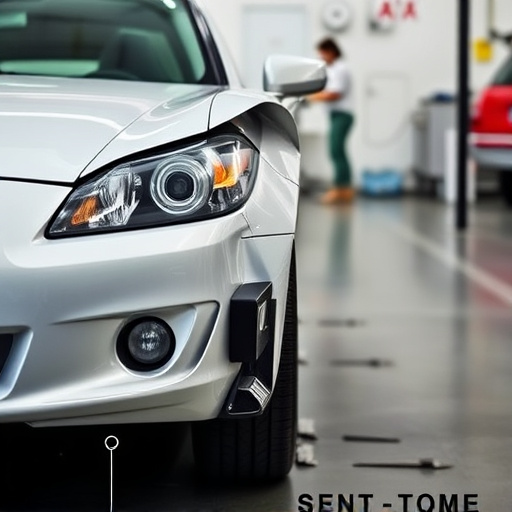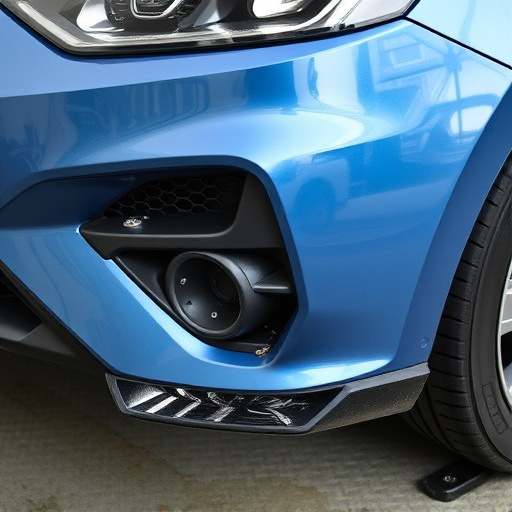Modern vehicles' increased reliance on electronic systems makes electronic diagnostics collision services crucial for post-crash safety and repair. These tools identify both visible and subtle damage in complex systems like ADAS and electric vehicle components, ensuring precise repairs tailored to each incident. By enhancing safety, preventing future issues, and facilitating faster, cost-effective repairs, electronic diagnostics are integral to modern automotive landscape recovery.
Modern vehicles are increasingly reliant on intricate electronic systems, making their safety and repairs post-collision a complex matter. In today’s automotive landscape, understanding the crucial role of electronic diagnostics after a crash is essential. This article explores why modern vehicles demand advanced electronic diagnostic capabilities to ensure enhanced safety measures and streamline efficient repairs following an impact event.
We’ll delve into these key areas: the growing dependence on electronics in modern cars post-collision, the enhanced safety benefits of electronic diagnostics, and the importance of diagnostic tools for effective repairs.
- Modern Vehicles' Dependence on Electronics Post-Collision
- Enhanced Safety: Electronic Diagnostics Role After Impact
- Navigating Repairs: The Importance of Diagnostic Tools
Modern Vehicles' Dependence on Electronics Post-Collision

Modern vehicles are intricately designed with an ever-growing reliance on electronic systems and sensors. Unlike traditional cars that relied heavily on mechanical parts for operation and safety, contemporary automobiles incorporate complex computer networks to manage various functions, including engine control, braking systems, airbags, and even infotainment. This digital transformation has significantly altered the dynamics of what happens during and after a collision.
When a modern vehicle undergoes a collision, the impact can disrupt these delicate electronic networks, potentially causing malfunctions or rendering certain safety features ineffective. Electronic diagnostics play a pivotal role in post-collision assessments as they enable mechanics to identify and address issues with precision. This is particularly crucial for complex systems like advanced driver-assistance systems (ADAS) and electric vehicle (EV) components, which may not exhibit immediate physical damage but could be compromised due to the energy transfer during an impact. Vehicle paint repair and car body restoration processes often go hand in hand with electronic diagnostics, as they are essential to ensure the safety and reliability of modern automobiles following a collision.
Enhanced Safety: Electronic Diagnostics Role After Impact

In today’s modern automotive landscape, electronic diagnostics play a pivotal role in enhancing safety measures following a collision. Unlike traditional vehicles, contemporary cars are equipped with intricate computer systems that monitor and control various functions. When a car collision occurs, these electronic diagnostic tools become invaluable assets. They enable auto body repair professionals to quickly identify potential issues, from damaged sensors to compromised structural integrity.
By leveraging advanced technology, technicians can perform precise assessments, ensuring comprehensive car collision repair. This not only facilitates faster repairs but also enhances overall safety. Even tasks like auto glass repair, a critical component in many accidents, benefit from electronic diagnostics, as they help detect any cracks or chips that could compromise visibility and driver safety.
Navigating Repairs: The Importance of Diagnostic Tools

In the aftermath of a car collision, navigating repairs efficiently becomes paramount to ensure safety and minimize costs. Traditional methods often relied on manual inspections and guesswork for diagnosing vehicle damage, but modern vehicles demand a more sophisticated approach. Electronic diagnostics have become indispensable in the post-collision assessment process due to their precision and capability to detect intricate issues. These tools play a pivotal role in identifying not just visible damages like frame misalignments or torn upholstery (often requiring frame straightening and auto painting services), but also subtler problems such as sensor malfunctions, electrical failures, or structural integrity breaches that might go unnoticed without advanced scanning capabilities.
By leveraging electronic diagnostics, repair technicians gain valuable data that facilitates accurate repairs tailored to each specific collision scenario. This not only streamlines the car collision repair process but also enhances safety by ensuring that every component of the vehicle functions optimally after the incident. Moreover, these diagnostic tools enable mechanics to prevent future problems by identifying potential vulnerabilities before they escalate, contributing to a more reliable and safer driving experience.
Modern vehicles’ increasing reliance on intricate electronic systems means that electronic diagnostics play a pivotal role in assessing and repairing damage after a collision. These advanced diagnostic tools not only enhance safety by quickly identifying potential hazards but also streamline repair processes, ensuring that vehicles return to the road in a safe and reliable condition. By leveraging electronic diagnostics post-impact, we can navigate repairs more efficiently, ultimately benefiting both vehicle owners and road safety as a whole.














